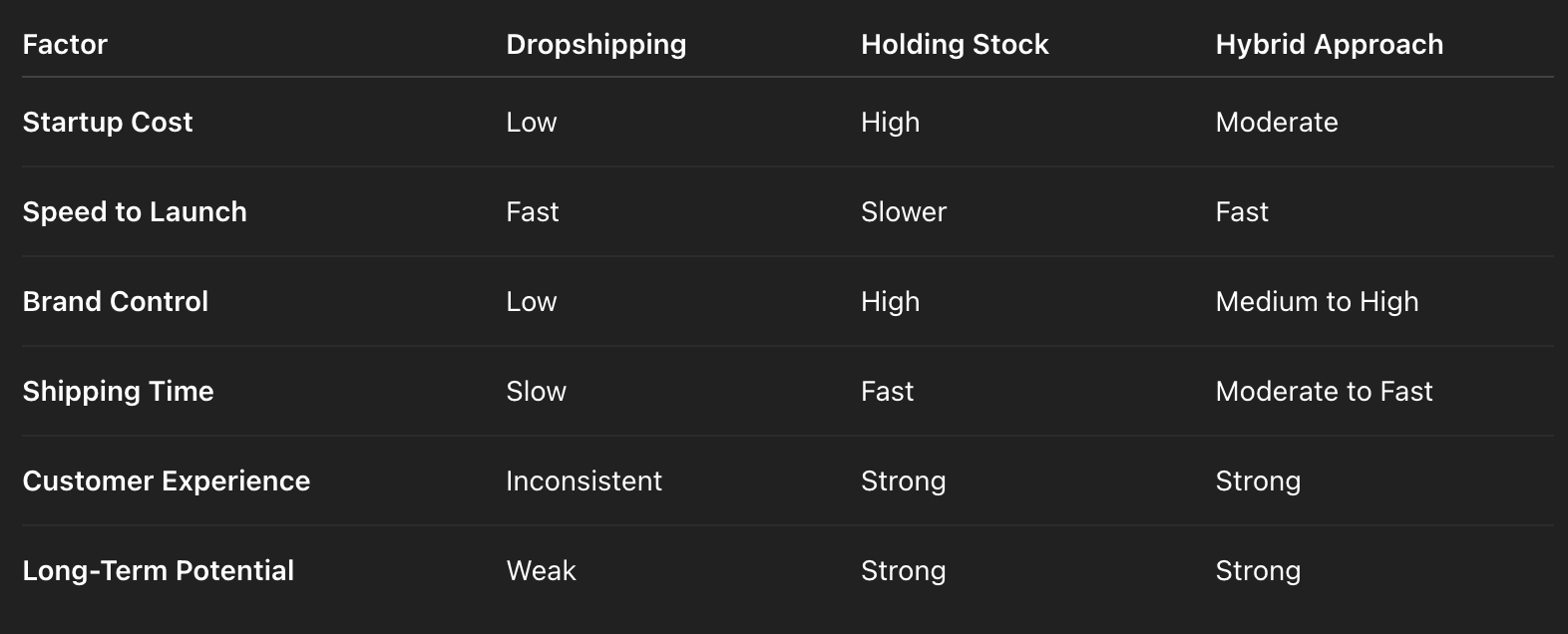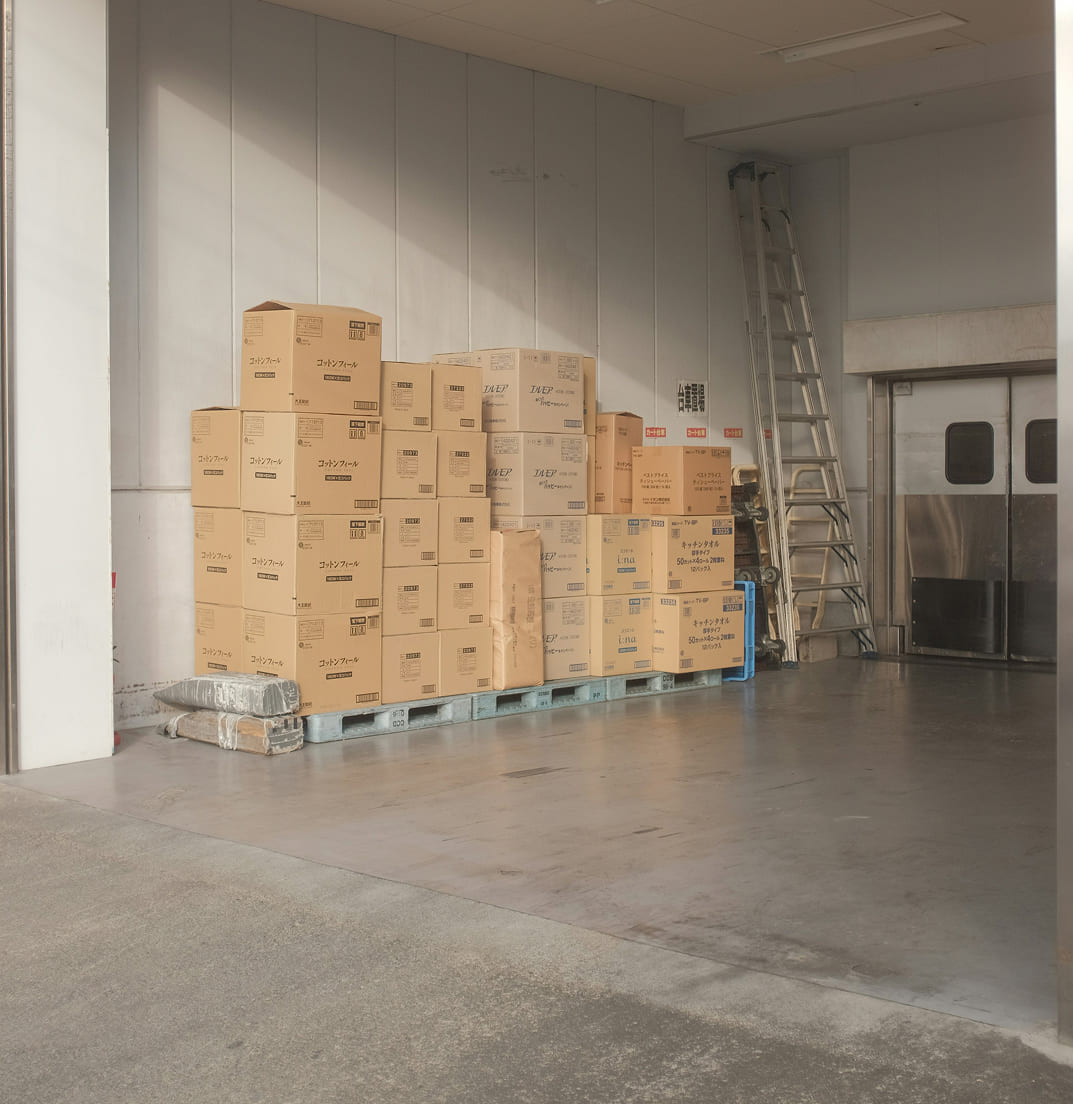
If you are a beginner thinking about starting a dropshipping business in 2025, you are not alone. The barrier to entry is lower than ever, ecommerce continues to grow globally, and the idea of launching a store without managing inventory still sounds appealing. But let us be clear: the traditional dropshipping model is not what it used to be. What worked in 2018 no longer works today.
If you are planning to sell generic products from overseas suppliers with shipping times of two to four weeks, you are going to struggle. Customer expectations have changed. Shipping speed, brand trust, and user experience are non-negotiable.
This guide takes a realistic look at dropshipping in 2025. We will cover what works, what does not, how to handle the shipping challenge, what the best suppliers look like today, and why some entrepreneurs are moving to hybrid models instead.
What Is Dropshipping in 2025?
Dropshipping is a retail model where you do not hold any inventory. When someone buys a product from your online store, your supplier ships it directly to the customer. This allows you to test products and run your business without warehousing costs.
However, in 2025, dropshipping has evolved. It is no longer about random general stores or viral gadgets. Modern dropshipping often means:
- Focusing on a single product or tight product range
- Building a real brand presence
- Partnering with reliable suppliers that offer fast shipping
- Using paid and organic content marketing to drive traffic
In this version, dropshipping becomes a testing ground — not the final business model.
Pros of Starting with Dropshipping
- Low startup cost: You can test products and run ads with as little as five hundred to one thousand dollars.
- Speed to market: It is possible to launch within a few days.
- No inventory risk: You do not need to invest in stock upfront.
- Flexibility: You can pivot between niches quickly.
- Learning experience: You gain exposure to ecommerce fundamentals like copywriting, marketing strategy, landing pages, and customer service.
The Downsides of Dropshipping Today
- Slow shipping times: Customers expect delivery in a few days, not a few weeks. Long delays kill conversion rates and cause refund requests.
- No quality control: You do not get to see what your customer receives. This can lead to complaints and chargebacks.
- Thin profit margins: After paying for advertising and shipping, you might only make a few dollars per order.
- Customer support issues: If something goes wrong, you are responsible — even if it was the supplier’s fault.
- Lack of brand equity: You are not building a long-term asset if your store feels generic or disposable.
Best Dropshipping Suppliers in 2025
If you want to give dropshipping a shot, your supplier matters more than ever. Here are a few platforms and tools worth exploring:
- Zendrop: Offers global shipping, some branding customisation, and smooth Shopify integration.
- CJ Dropshipping: Functions as a sourcing agent with options to filter for local warehouses and faster fulfilment.
- DSers: A good alternative to AliExpress that includes tools for finding products with faster shipping times.
- Dropshipzone: Offers local warehousing and two to six day shipping windows.
- Private agents: These sourcing professionals work with you once you are making regular sales. They can manage quality control, offer better pricing, and fulfil orders faster.
How to Solve the Shipping Problem
Shipping speed can make or break your customer experience. Here are your options:
- Filter for local warehouses: Look for suppliers who store products in-region. This drastically improves delivery times.
- Order small batches: Once you validate demand, you can import a small quantity and ship through local carriers.
- Use sourcing agents: If you get to five or more orders per day, agents can store inventory for you and ship it quickly.
Smart Tips for Beginners
- Pick a very specific niche: Instead of general pet products, try something like calming gear for dogs with anxiety.
- Build a one-product store: This keeps your focus sharp and makes it easier to build trust.
- Always order samples: You need to know what your customer will receive.
- Offer buy-now-pay-later: Services like Afterpay or Klarna increase conversions.
- Be honest about delivery times: Clear communication prevents refunds.
- Use real content: User-generated photos and videos outperform polished ads.
- Test offers as well as products: Try bundles, free shipping, and gifts to see what converts best.
Common Mistakes to Avoid
- Picking viral products with no real use case
- Choosing suppliers with no shipping transparency
- Launching without checking reviews or ordering samples
- Ignoring follow-ups with cart abandoners
- Expecting ads to work without learning offer angles and copywriting
Dropshipping vs Holding Stock vs Hybrid Models

Hybrid stores are now the most popular option among serious ecommerce business owners. You test products using dropshipping, then shift to in-house or third-party fulfilment once the offer is validated. This balances flexibility with better customer satisfaction and long-term growth.
Why Many Founders Skip Traditional Dropshipping
The most successful ecommerce founders treat dropshipping as a stepping stone, not the destination. They use it to validate offers, then quickly transition into a stronger model. This gives them better profit margins, more reliable fulfilment, and an actual brand customers trust.
Working with a mentor or program that provides access to vetted suppliers, creative frameworks, and conversion-tested store templates can help you skip months of trial and error.
Frequently Asked Questions
Is dropshipping legal? Yes. But you must follow consumer protection laws, including transparent shipping times and offering refunds.
Do I need to register my business to dropship? Yes. In most regions, it takes only fifteen minutes and is free or low-cost.
Which platform is best for dropshipping? Shopify is the most beginner-friendly platform and integrates with all major dropshipping tools.
Can I dropship domestically? Yes. Many platforms now allow you to filter suppliers by region or use local fulfilment services.
How fast can I become profitable? Most founders take one to three months to validate a product and optimise their store. With the right strategy, it can be faster.
Why Ecom Capital Helps Founders Launch Faster
We help beginners build real ecommerce brands — not just temporary dropshipping stores. Our team provides:
- Access to reliable suppliers and agents
- High-converting store templates
- Tested ad frameworks and creative strategies
- A clear roadmap from launch to scale
We work closely with our clients to build brands that ship fast, convert well, and create loyal customer bases. No guesswork. Just execution.
Book Your Free Ecommerce Strategy Session
If you are serious about launching a store this year — whether you want to start with dropshipping, go hybrid, or hold inventory — we will help you map out your next thirty days.
Your free strategy session includes:
- A personalised niche and product audit
- Supplier and fulfilment recommendations
- A checklist for launch and optimisation
- Offer and ad strategy to drive first sales
Reserve your free ecommerce strategy call today.
More Free Resources from Ecom Capital
Book a demo with our team and learn more about how eCom Capital can help you today

